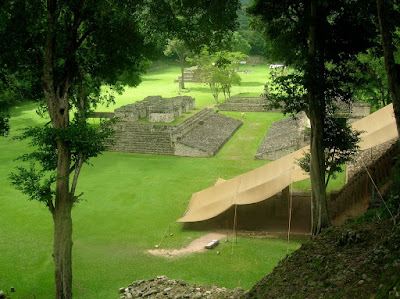The systematization continues...on Monday I had my second meeting with the whole team to work through the last two packets of interview questions. We thought we were going to be able to do it all in our meeting last week but we acutally needed an entire additional day in order to complete everything. We worked through all the remaining questions in a very very hot little room. Everyone was incredibly patient and helpful. At this point I have all the information I need for the three parts of the systematization: the historical reconstruction, the current obstacles and issues, and the step-by-step guide to implement a village health program. Unfortunately I only have a week to compile all the information! The office in Libertad where we had the two meetings. The Extentionistas are out front on their motorcycles. Each Extentionista oversees a region that includes several communities. They oversee all the different aspects of the health program. All the Extentionistas drove to Libertad (up to 2 hours for some of them) twice in order to help me collect all the information from them.
The office in Libertad where we had the two meetings. The Extentionistas are out front on their motorcycles. Each Extentionista oversees a region that includes several communities. They oversee all the different aspects of the health program. All the Extentionistas drove to Libertad (up to 2 hours for some of them) twice in order to help me collect all the information from them.
 The office in Libertad where we had the two meetings. The Extentionistas are out front on their motorcycles. Each Extentionista oversees a region that includes several communities. They oversee all the different aspects of the health program. All the Extentionistas drove to Libertad (up to 2 hours for some of them) twice in order to help me collect all the information from them.
The office in Libertad where we had the two meetings. The Extentionistas are out front on their motorcycles. Each Extentionista oversees a region that includes several communities. They oversee all the different aspects of the health program. All the Extentionistas drove to Libertad (up to 2 hours for some of them) twice in order to help me collect all the information from them.





























